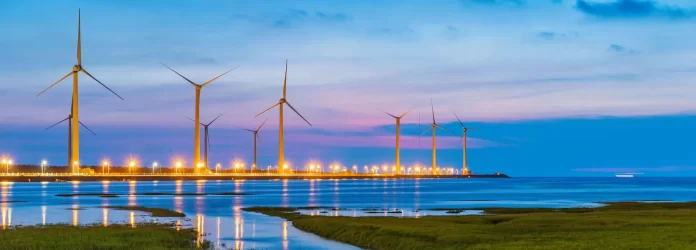In recent years, the world has witnessed a remarkable shift towards renewable energy sources as a means of mitigating climate change and reducing our dependence on fossil fuels. The rapid advancements in renewable energy technologies have opened up new possibilities and are shaping a sustainable future for generations to come. From solar and wind power to geothermal and hydroelectric energy, these innovative solutions are revolutionizing the way we generate and consume electricity. In this article, we will explore some of the significant advances in renewable energy and their impact on our quest for a greener and more sustainable planet.
Solar energy, one of the most abundant and widely accessible forms of renewable energy, has made tremendous progress in recent years. The development of highly efficient photovoltaic (PV) cells and advanced solar panel designs has significantly increased the efficiency and affordability of solar power. Thin-film solar cells, for instance, offer flexibility and versatility in terms of applications and installation. Moreover, breakthroughs in solar panel manufacturing processes, such as the use of perovskite materials, hold promise for even greater efficiency gains. Additionally, the integration of solar power with energy storage systems, such as lithium-ion batteries, is enhancing the viability of solar energy as a reliable and continuous power source.
Another rapidly growing renewable energy source is wind power. Advances in wind turbine technology have led to the development of larger, more efficient turbines that can generate more electricity. The use of advanced materials, such as carbon fiber, has reduced the weight of turbine blades, allowing them to capture more energy from the wind. Furthermore, the implementation of smart grid technologies and predictive analytics has improved the management and integration of wind power into the existing electrical grid. Offshore wind farms, with their higher wind speeds and less visual impact, are also gaining traction as a significant source of renewable energy.
Geothermal energy, harnessed from the Earth’s heat, has immense potential as a reliable and constant source of power. Technological advancements have made it possible to tap into geothermal reservoirs even in areas with lower heat gradients. Enhanced geothermal systems (EGS), which involve creating artificial reservoirs by injecting water into hot rocks, are being developed to unlock geothermal resources in regions where conventional geothermal power generation is not feasible. The use of advanced drilling techniques and geophysical modeling has also improved our understanding of subsurface geology and resource estimation, aiding the identification of suitable geothermal sites.
Hydroelectric power, a well-established renewable energy source, is undergoing modernization to maximize its efficiency and minimize its environmental impact. New turbine designs, such as fish-friendly turbines, allow for the safe passage of fish through hydroelectric dams, reducing ecological disruption. Pumped storage hydroelectricity, which involves pumping water to a higher reservoir during periods of low demand and releasing it to generate electricity during peak demand, is being increasingly employed as a form of energy storage to balance the intermittent nature of renewable sources like solar and wind power.

In addition to these specific renewable energy technologies, significant progress has been made in energy storage, grid integration, and smart energy management systems. Energy storage technologies, including batteries and hydrogen fuel cells, are essential for ensuring a consistent supply of electricity when renewable sources are not actively generating power. The development of high-capacity and long-lasting batteries is crucial for the widespread adoption of electric vehicles, which play a pivotal role in reducing carbon emissions in the transportation sector.
The integration of renewable energy sources into the existing electrical grid is a complex task that requires sophisticated management systems. Advanced grid management technologies, such as smart meters and demand-response systems, enable real-time monitoring of energy consumption and optimize energy distribution. Furthermore, machine learning and artificial intelligence algorithms are being employed to predict energy demand patterns and optimize the utilization of renewable energy resources.
The transition to a sustainable future powered by renewable energy is not without its challenges. The intermittent nature of some renewable sources, such as solar and wind power, necessitates the development of efficient energy storage solutions and flexible grid infrastructure. Moreover, the scalability and affordability of renewable energy technologies need to be improved to ensure widespread adoption across the globe.
However, despite these challenges, the advances in renewable energy are undeniably shaping a sustainable future. The declining costs of renewable technologies, coupled with the increasing environmental consciousness and policy support, are driving the rapid deployment of renewable energy projects worldwide. Countries are setting ambitious renewable energy targets and investing in research and development to unlock the full potential of renewable resources.
Ultimately, a future powered by renewable energy offers numerous benefits. It reduces greenhouse gas emissions, improves air quality, enhances energy security, creates jobs, and fosters technological innovation. By embracing and furthering these advances, we can transition to a sustainable energy system that not only addresses the urgent challenges of climate change but also unlocks a myriad of economic and social opportunities.
In conclusion, the advances in renewable energy technologies are revolutionizing the global energy landscape and shaping a sustainable future. Solar, wind, geothermal, and hydroelectric power, along with advancements in energy storage and grid integration, are driving the transition towards a cleaner and more resilient energy system. As we continue to innovate and invest in renewable energy, we move closer to a world where sustainable development and environmental stewardship go hand in hand.

